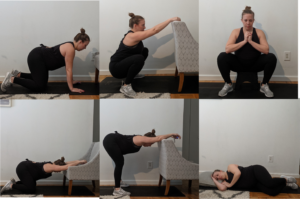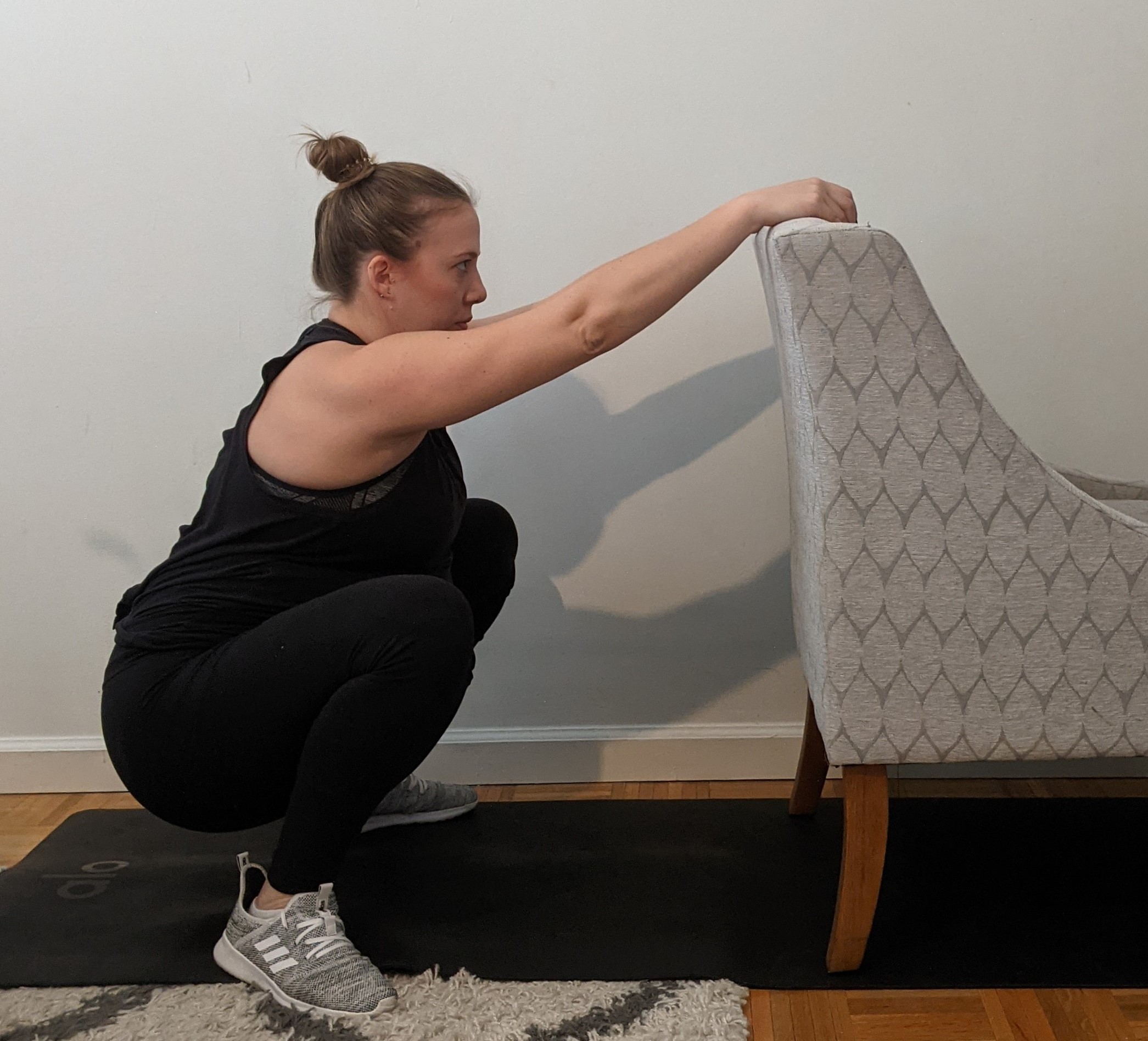Stage 1 Labor (the “contraction” stage) is truly Mother Nature’s ultimate interval training. Contractions begin very mild (almost imperceptible) with long rest periods in between. As labor progresses, contractions grow in intensity and duration, and the rest in between gets shorter. Therefore, energy system training is key to successfully managing through Stage 1 Labor. This is where LIIT™ (Labor Intensity Interval Training) comes in.
If you wish to have an unmedicated birth — or even if you don’t — learning how to manage through intensity, conserve your energy, and maximize your recovery time can be immensely helpful in whatever birth experience you have. Learn how LIIT™ works below. For more information on what happens during labor, check out our 3-Part Childbirth Preparation Series.
What is LIIT?
Labor-Intensity Interval Training (LIIT™) is a performance-based way of preparing for the physical and mental demands of Stage 1 labor. It is similar to HIIT (High Intensity Interval Training) in that you perform a series of work intervals with rest periods in between. However, there are two key differences:
- Work-to-Rest ratios are designed to mimic the pattern of contractions: In most interval training formats, the higher the intensity of the work period, the shorter that work period is. For example, the movement you would do for a 20-second Tabata interval would likely be much more intense than a movement done for a full 45-60 sec. However, we know that in labor, contractions get longer and more intense as they progress, so that’s how we structure LIIT™ intervals.
- Rest intervals involve deliberate labor practices: Unlike HIIT, the rest periods are equally as important as the work intervals. The rest periods of LIIT™ focus on specific energy management strategies to quickly shift your physical and mental state towards one that will help you better cope with the stresses of late Stage 1 contractions.
How does LIIT Work?
The first step is to decide how long your work and rest intervals will be, and how many rounds you will perform. The chart below gives you some general interval guidelines (you can modify these as you see fit). As you can see, the far left side lists shorter/more moderate intensity work intervals and longer rest. As you progress to the right, the work intervals get longer and more intense, and the rest periods get shorter (to mimic the pattern of contractions). Begin on the far left, and gradually progress to the right as you get stronger. You may never get to the far right, and that’s completely fine.
After you select your intervals, the next step is to select your movements for the work intervals, and the positions for the rest intervals.

Selecting Exercises for the “Work” Intervals
Your work interval exercises should challenge your cardio-respiratory system, but in a safe way that accounts for the physical and physiological changes of the third trimester body (no jumping jacks or burpees here!). Below are just a few examples of movements that accomplish these things. Remember that every individual is different. What feels like “moderate intensity” for one person may feel like “high intensity” for another. Find a movement that feels safe, but gets your heart pumping. You can choose just 1 movement to do for every interval, or alternate between two.
1. Cardio Chair Getup Variations: The chair getup can make a great cardio move when done at a quicker pace. Watch the progression of alternating lifting one leg as you stand up to increase the challenge. Inhale as you lower down, exhale as you stand.
2. High Knee Marches: These may look easy, but they really get your heart pumping! They are also good core work. To increase the challenge, pick up your tempo and lift your knees higher. Exhale as you lift your knee, and be sure to keep a neutral spine (avoid hunching over when you bring your knee up).
3. Reach Down & Up: This is a great one for all stages of pregnancy because it’s so customizable. You can do the full version — touching your fingertips to the ground — or, take it down a notch by decreasing the range of motion, and touching your knees or a block instead. Inhale as you lower down, exhale as you stand — making sure to keep your spine neutral and avoid hunching over to reach the ground.
4. Knee Repeaters: If you are not experiencing any symptoms of pelvic pain, knee repeaters are a great way to get your cardio in while building single-leg strength. To increase the challenge, get lower on your supporting leg. Perform both sides. Exhale as you lift your knee, and keep your spine neutral (avoid rounding as you lift your knee).
5. Diagonal Lifts: This is a great cardio + core + lower body move (again, as long as you are not experiencing pelvic pain). Grab any 3-5 lb object (a medicine ball, weight, book, pot, etc). You can customize the intensity by how low you go when reaching down toward the ground. Inhale as you reach down to one side, exhale as you push up and rotate to other side. Keep your spine neutral (avoid rounding over to reach the floor). Perform both sides.
6. Fast Punches: And finally, a great option if you you want to get your heart pumping, but your lower body just needs a break.:) Note the different stances you can use to vary the challenge.
Selecting Positions for Your “Rest” Periods
Remember, the intentional rest periods are a key way that LIIT™ differs from HIIT. Rest is actually the most important part of LIIT™. Select a labor position to get into for your rest periods. Below are a few options. As soon as your work interval is done, get into your labor position as quickly as possible and begin your 360° Breathing. The goal is to train your body to maximize your recovery time to ensure you are ready for the next bout of work.
You can begin with something as simple as a basic seated rest (like below) in a comfortable chair.

You can also experiment with some of the other common labor positions below. These are just a few examples. As we emphasize in Childbirth Preparation: Stage 1, once active labor begins, it’s a good idea to change positions about every 30 minutes. Therefore, practicing a variety of positions during pregnancy gives you more options — that you know you are comfortable with — to access during active labor.

Important Note
No matter what birth experience you wish to have — unmedicated, epidural, planned C-section — LIIT is a great way to practice energy system management, which is an important skill regardless of delivery method. That said, you should always feel empowered to stop if anything you are doing feels uncomfortable. As with any prenatal exercise guidance, listen to your body.
Want Additional Resources?
For additional resources to help you exercise safely and effectively during pregnancy, explore our training programs and services. You’ll find a variety of offerings tailored to different needs — from education, to self-guided programs, to the ability to work with an expert coach.
Or, if you’re a health & fitness pro interested in coaching pre & postnatal clients, check out our ProNatal Education & Certification.
